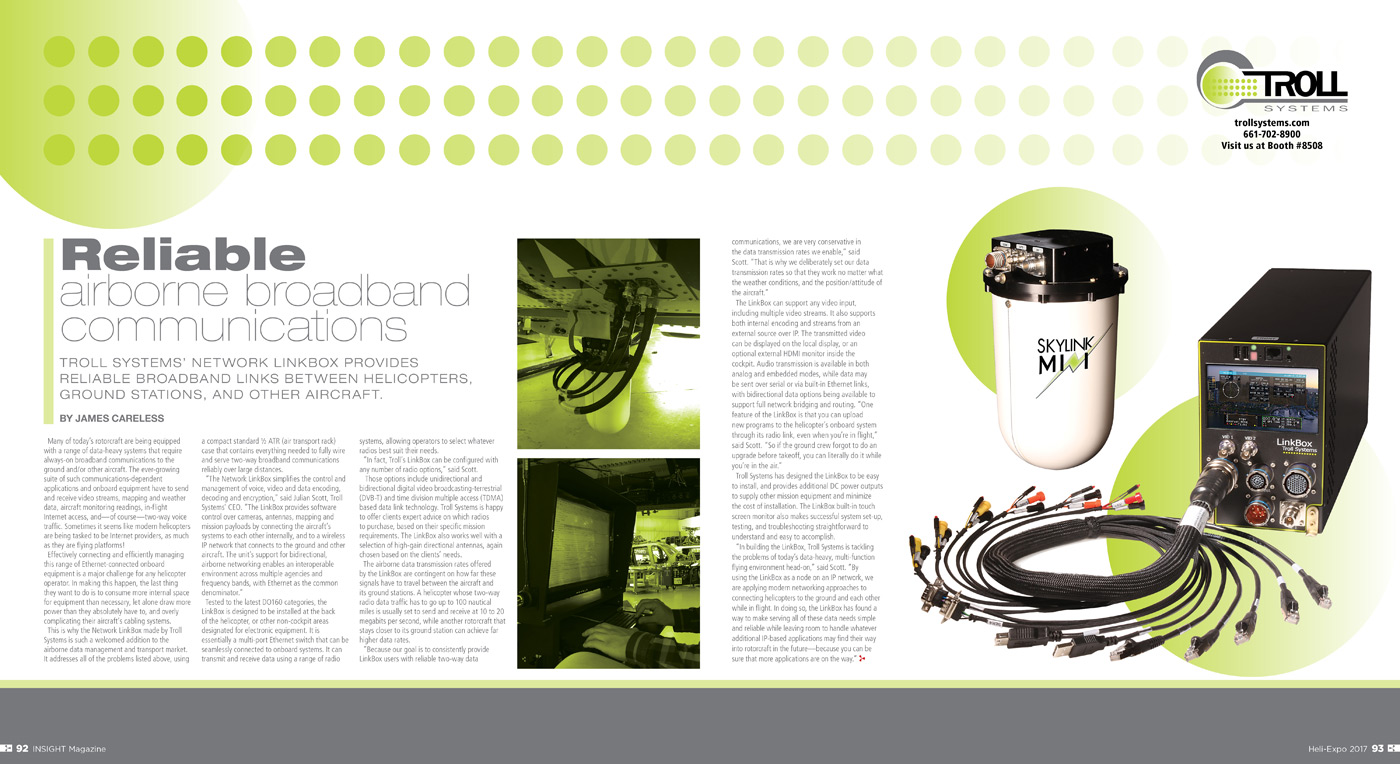Many of today’s rotorcraft are being equipped with a range of data-heavy systems that require always-on broadband communications to the ground and/or other aircraft. The ever-growing suite of such communications-dependent applications and onboard equipment have to send and receive video streams, mapping and weather data, aircraft monitoring readings, in-flight Internet access, and–of course–two-way voice traffic. Sometimes it seems like modern helicopters are being tasked to be Internet providers, as much as they are flying platforms!
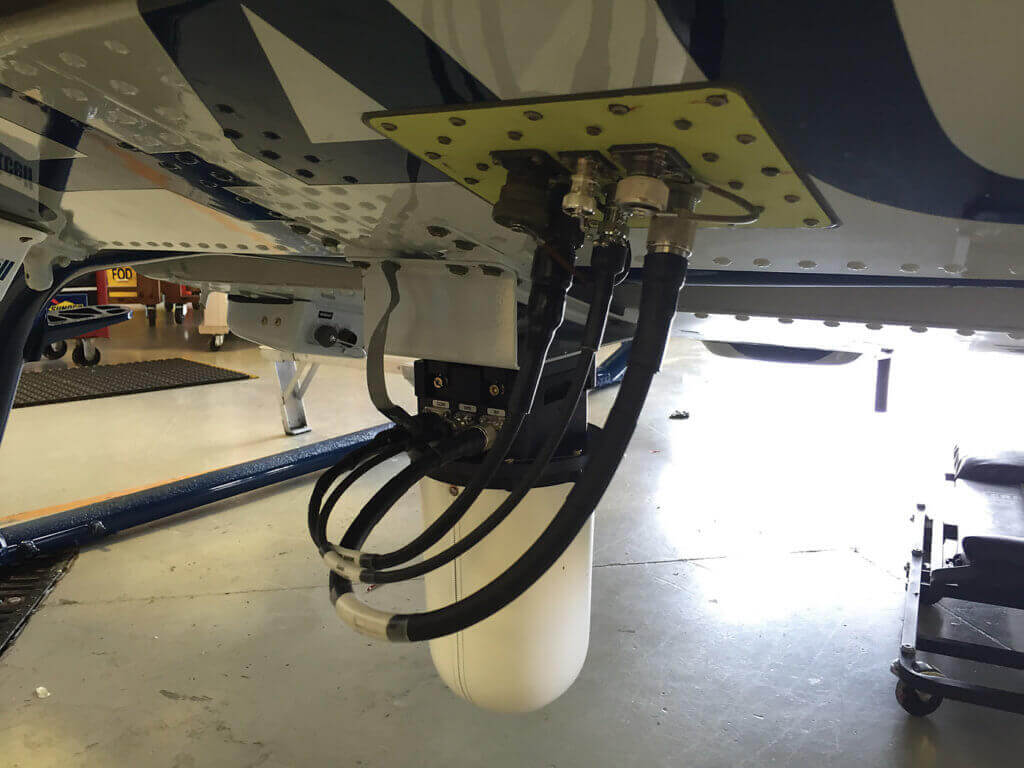
Effectively connecting and efficiently managing this range of Ethernet-connected onboard equipment is a major challenge for any helicopter operator. In making this happen, the last thing they want to do is to consume more internal space for equipment than necessary, let alone draw more power than they absolutely have to, and overly complicating their aircraft’s cabling systems.
This is why the Network LinkBox made by Troll Systems is such a welcomed addition to the airborne data management and transport market. It addresses all of the problems listed above, using a compact standard ½ ATR (air transport rack) case that contains everything needed to fully wire and serve two-way broadband communications reliably over large distances.
“The Network LinkBox simplifies the control and management of voice, video and data encoding, decoding and encryption,” said Julian Scott, Troll Systems’ CEO. “The LinkBox provides software control over cameras, antennas, mapping and mission payloads by connecting the aircraft’s systems to each other internally, and to a wireless IP network that connects to the ground and other aircraft. The unit’s support for bidirectional, airborne networking enables an interoperable environment across multiple agencies and frequency bands, with Ethernet as the common denominator.”
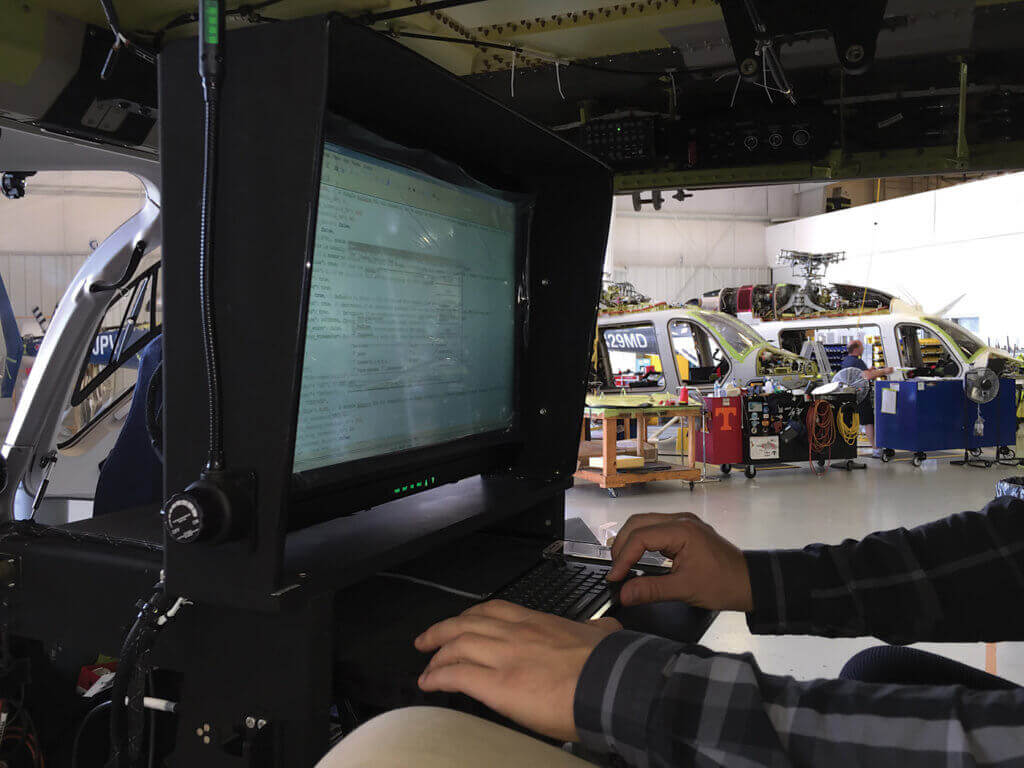
Tested to the latest DO160 categories, the LinkBox is designed to be installed at the back of the helicopter, or other non-cockpit areas designated for electronic equipment. It is essentially a multi-port Ethernet switch that can be seamlessly connected to onboard systems. It can transmit and receive data using a range of radio systems, allowing operators to select whatever radios best suit their needs.
“In fact, Troll’s LinkBox can be configured with any number of radio options,” said Scott.
Those options include unidirectional and bidirectional digital video broadcasting-terrestrial (DVB-T) and time division multiple access (TDMA) based data link technology. Troll Systems is happy to offer clients expert advice on which radios to purchase, based on their specific mission requirements. The LinkBox also works well with a selection of high-gain directional antennas, again chosen based on the clients’ needs.
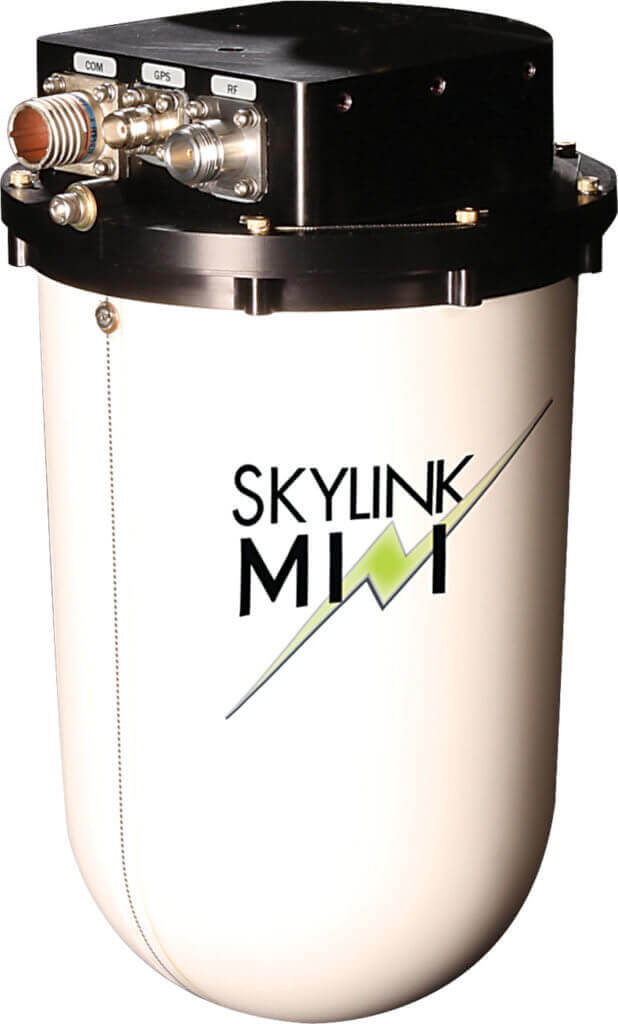
The airborne data transmission rates offered by the LinkBox are contingent on how far these signals have to travel between the aircraft and its ground stations. A helicopter whose two-way radio data traffic has to go up to 100 nautical miles is usually set to send and receive at 10 to 20 megabits per second, while another rotorcraft that stays closer to its ground station can achieve far higher data rates.
“Because our goal is to consistently provide LinkBox users with reliable two-way data communications, we are very conservative in the data transmission rates we enable,” said Scott. “That is why we deliberately set our data transmission rates so that they work no matter what the weather conditions, and the position/attitude of the aircraft.”
The LinkBox can support any video input, including multiple video streams. It also supports both internal encoding and streams from an external source over IP. The transmitted video can be displayed on the local display, or an optional external HDMI monitor inside the cockpit. Audio transmission is available in both analog and embedded modes, while data may be sent over serial or via built-in Ethernet links, with bidirectional data options being available to support full network bridging and routing. “One feature of the LinkBox is that you can upload new programs to the helicopter’s onboard system through its radio link, even when you’re in flight,” said Scott. “So if the ground crew forgot to do an upgrade before takeoff, you can literally do it while you’re in the air.”
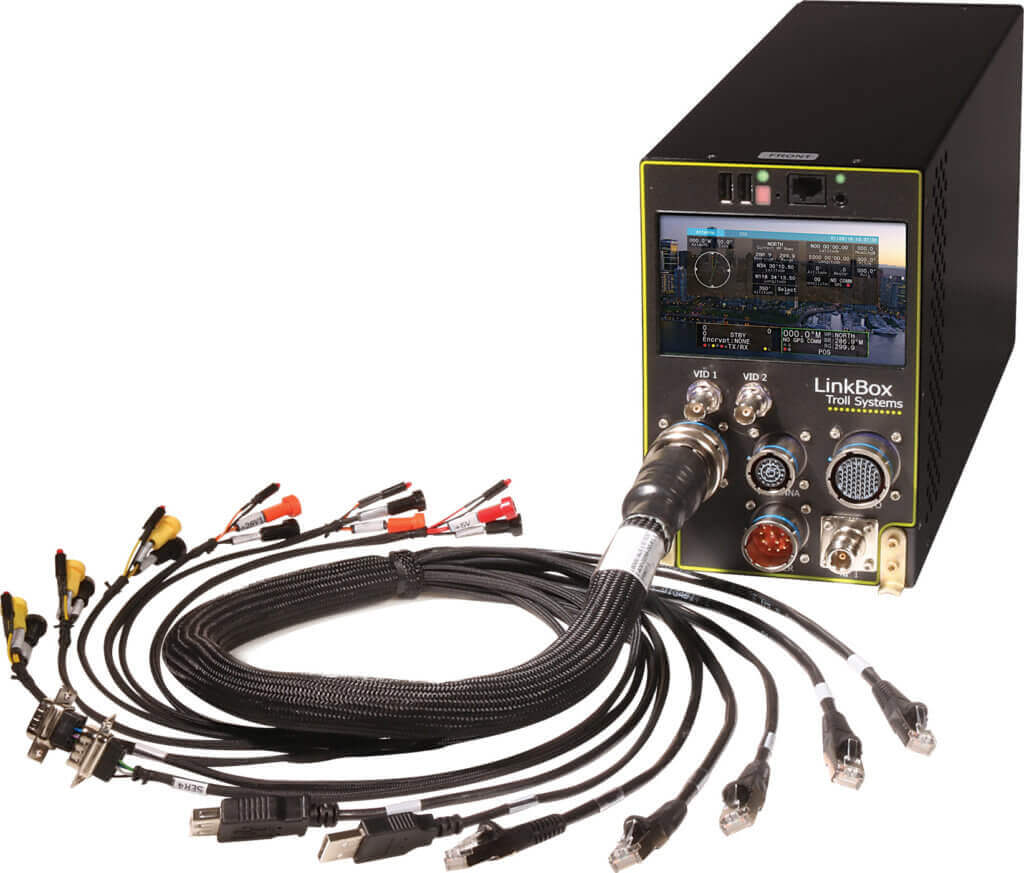
Troll Systems has designed the LinkBox to be easy to install, and provides additional DC power outputs to supply other mission equipment and minimize the cost of installation. The LinkBox built-in touch screen monitor also makes successful system set-up, testing, and troubleshooting straightforward to understand and easy to accomplish.
“In building the LinkBox, Troll Systems is tackling the problems of today’s data-heavy, multi-function flying environment head-on,” said Scott. “By using the LinkBox as a node on an IP network, we are applying modern networking approaches to connecting helicopters to the ground and each other while in flight. In doing so, the LinkBox has found a way to make serving all of these data needs simple and reliable while leaving room to handle whatever additional IP-based applications may find their way into rotorcraft in the future–because you can be sure that more applications are on the way.”
If you would like to see your company featured in Insight, contact Derek Kast at derek@mhmpub.com.





